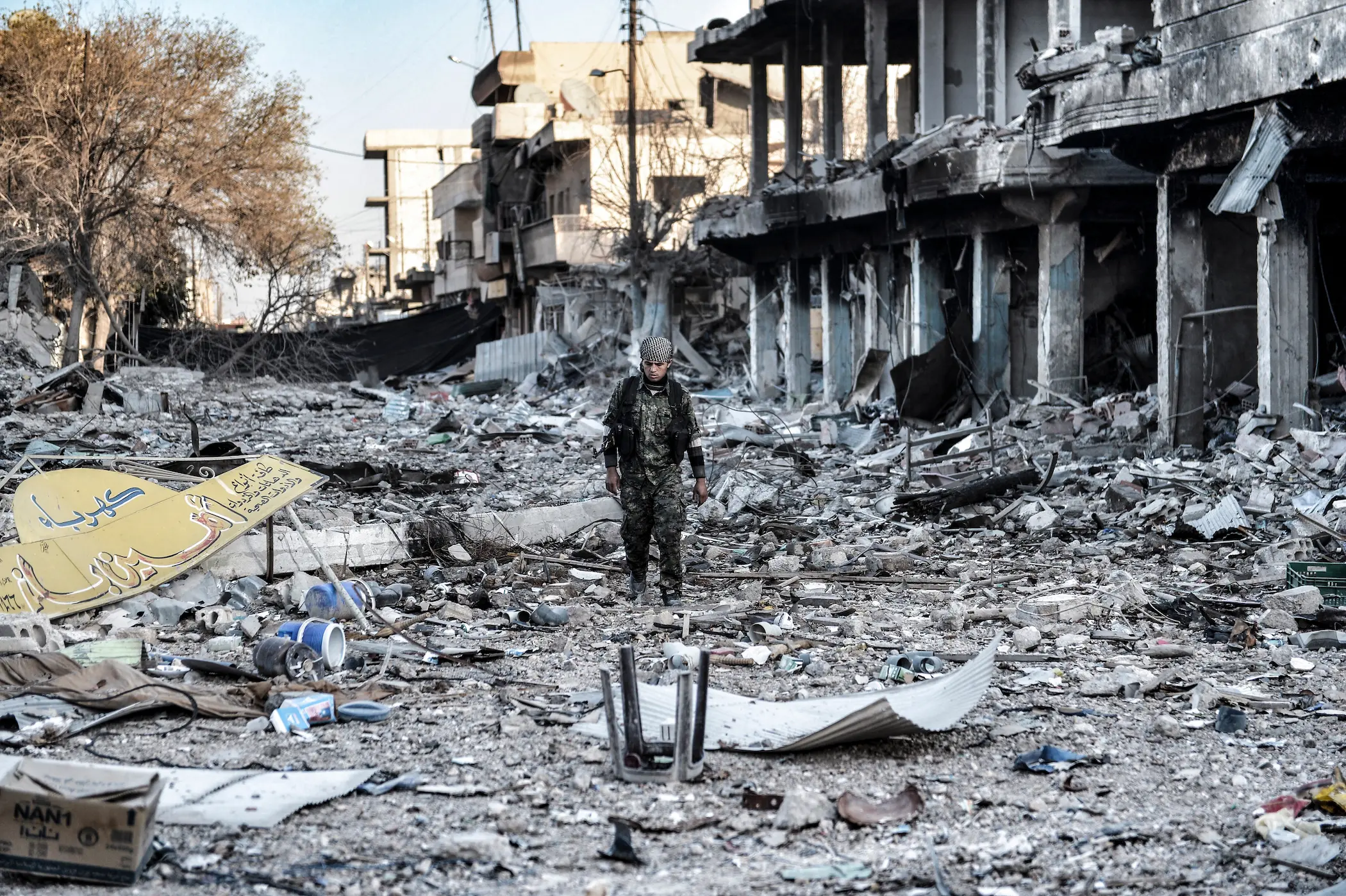A whole year has passed since Hamas' military operations in the Gaza Strip Envelope, marking what many considered the first Palestinian incursion into Israeli territory since the war that led to Israel’s establishment in the late 1940s. The war resulted in the capture of dozens of Israelis and the deaths of hundreds more. In response, Israel launched its most extensive military campaign since the 1973 Sixth of October War, aiming to rebuild its fragmented deterrence capabilities and restore its diminished regional stature. This effort involved tens of thousands of airstrikes and the monthly deployment of approximately 10,000 artillery shells. Over 66% of the buildings in Gaza were damaged, with about 163,700 structures affected, including the complete destruction of 52,500 buildings. The human cost was equally staggering, with over 41,000 Palestinian fatalities recorded. The situation remains unresolved, leaving the war's toll ongoing. The destruction has not been confined to Gaza alone. The financial and reputational costs for Israel have been severe. Though the thousands of missile attacks launched by Hamas had limited impact on Israel's critical infrastructure, they significantly undermined its economy and tarnished its image as a secure, advanced economy. This prompts a thorough analysis of the war's impact on Israel's economic stability over the past year and a projection of its potential long-term consequences.
Short-term Repercussions
The Israeli economy experienced numerous short-term economic repercussions throughout the year following the onset of military operations on October 7. These can largely be attributed to the unexpectedly prolonged duration of the war, as most analysts had initially projected that the hostilities would not extend beyond a few months, let alone surpass a year. The absence of a clear resolution timeline exacerbated these effects, which began unfolding at the outset of the operations and persist to this day. Among the most significant impacts have been the fluctuations in the exchange rate and the downturn in the tourism sector.
Pressures on the Israeli Shekel Exchange Rate
The Israeli shekel bore the initial brunt of the war’s financial shocks, as local markets responded by swiftly offloading the currency, driven by an overwhelming demand for the U.S. dollar—a traditional safe haven during times of crisis. This dynamic, marked by a surge in shekel supply and a corresponding increase in dollar demand, led to a rapid depreciation of the shekel. The exchange rate fell sharply, fluctuating between 3.8 and 4.1 shekels per dollar during the period from October 1 to 22, 2023, as illustrated in the following figure:
Tourism Rates Decline
Long-term Repercussions
The most significant long-term repercussions of the ongoing war involve substantial changes to Israeli public spending, particularly a sharp increase in the defence and internal security budgets. This shift is driven by the unprecedented internal threats Israel has faced over the past 50 years. These effects can be summarized as follows:
Increase in Military Spending
In 2022, Israel ranked sixth globally in terms of military spending as a percentage of GDP, at 4.5%, and 15th in absolute terms, with expenditures reaching $23.4 billion. This followed a peak of more than $24 billion in 2021. Military spending is expected to surge further in 2024 and 2025 due to the high costs associated with ongoing military operations. Several factors contribute to this anticipated rise:
Duration of the War: Israel typically favours short, decisive wars that leverage its air superiority, limiting the need for prolonged ground engagements and minimising both human and material losses. However, the ongoing war in Gaza, which lasted 365 days by the end of 2023, is projected to extend until at least Dec. 2024—reaching 425 days by that time. Under less optimistic, though not worst-case scenarios, the war could last until March 2025, marking 515 days. This would make it Israel’s longest war, surpassing even the 1948 War in terms of duration.
Nature of Combat: The current war involves direct, unconventional ground combat in Gaza and along Israel’s southern border with Lebanon. The fighting is characterised by urban guerrilla warfare in densely populated areas like Gaza, where destruction of infrastructure is widespread, and in the rugged terrain of southern Lebanon, which further complicates military operations. This type of warfare diminishes the effectiveness of conventional weapons and significantly escalates costs.
Multiple Fronts: Israel is contending with at least four active fronts—Gaza, southern Lebanon, Houthi forces in Yemen, and potential Iranian involvement. There is also the possibility of hostilities extending to Iraq and, to a lesser extent, Syria. The involvement of these additional fronts has increased both material losses and financial costs.
As a result, the cost of the war has surged, with estimates suggesting it exceeded $67.3 billion by Aug. 2024. This figure predominantly reflects direct military expenditures, with daily costs averaging $200 million. The financial burden is expected to intensify as the war along Israel’s southern Lebanese front escalates.
Increase in the Budget Deficit and Government Debt
The overall deficit in Israel’s general budget has consistently grown alongside each surge in military spending during times of war. The ongoing war has placed severe economic pressure on the Israeli economy, which, even before the ramp-up in military expenditures, faced significant challenges. These pressures have impacted businesses, reducing tax revenues or stagnating their growth. In the best-case scenario, tax revenues have not grown sufficiently to offset the rapid rise in defence spending.
Consequently, this imbalance between increasing expenditures and declining or stagnant revenues has exacerbated the deficit.
o Studies indicate a strong correlation between war and the expansion of the deficit. For example, following the skirmishes with Hezbollah in 2000, the deficit surged to 8%, only to drop to around 1% by 2005-2006. However, it spiked again to 7% in 2009 after the Second Lebanon War, eventually slowing down as the war subsided. Yet, it jumped once more to over 10%, driven by the dual impact of the COVID-19 pandemic and military operations in Gaza during 2020-2021. By 2022, the deficit had shrunk to 2%, but it is now projected to rise to 5.3% for the current year.
This persistent increase in the deficit has led to a relative decline in social spending, particularly in health and education. These reductions have provoked growing discontent among liberal and leftist groups in Israel, further contributing to societal instability. The impact is already evident in the 2023 budget, where defence spending rose from NIS 83.7 billion in 2022 to NIS 114.1 billion—a substantial increase of NIS 30.3 billion, or 36.6%. In contrast, spending on social protection only increased by NIS 24.2 billion, or 12.8%, rising from NIS 187.8 billion in 2022 to NIS 212.08 billion in 2023. This uneven spending distribution has contributed to a rise in government debt, which increased from NIS 1.05 trillion to NIS 1.13 trillion in 2023, with further escalation expected in 2024.
Decrease in Investments in the Israeli Economy
As a result of the ongoing war, there has been a significant withdrawal of hot money and investments in Israeli Treasury bills, particularly during the fourth quarter of 2023, when about $6 billion was pulled out. This trend continued in the first two quarters of 2024, with withdrawals amounting to $933 million and $803 million, respectively. These outflows were driven by fears surrounding the economic repercussions of the war, which were confirmed by downgraded credit ratings with a negative future outlook, signalling further potential declines.
Foreign direct investment (FDI) was similarly affected. Inflows decreased from $5.6 billion in the third quarter of 2023 to $2.6 billion in the fourth quarter. This downward trend persisted into the first quarter of 2024, with FDI falling to $1.9 billion before rebounding to $5.8 billion in the second quarter. However, it is expected that FDI may collapse again if the escalation of war continues.
Structural Repercussions
These long-term repercussions affect the underlying structure of the Israeli economy, including changes in labour costs and export structures.
The Rise in Labour Costs
The Israeli economy relies heavily on Palestinian labour, with approximately 193,000 Palestinian workers employed in Israel and Israeli settlements (both formal and informal) in 2022, compared to 133,000 in 2019—an increase of 32.5%. Of these, 12.9% work in the industrial sector, while 57.4% are employed in construction and building, indirectly supporting numerous other sectors, especially industrial ones.
In 2022, the average daily wage in the West Bank was approximately 165 shekels (about $45), while the average daily wage in Israel was 425 shekels (about $116). This means the average Israeli worker earns about 2.5 times more than the average Palestinian worker. For instance, the average monthly wage of an Israeli construction worker is 10,000 shekels (about $2,750), while a construction worker in the West Bank earns around 4,000 shekels (about $1,100).
Without access to Palestinian labour, the cost of production in Israel will increase, particularly in sectors heavily reliant on labour, such as industry, agriculture, and construction. This, in turn, will raise the cost of Israeli goods, reducing their competitiveness in international markets. A clear indicator of these rising costs is the trend in average wages in the manufacturing and mining sectors, which dropped slightly from 21.6 thousand shekels in Sept. 2023 to 21.3 thousand shekels in Oct. 2023. Despite this minor decrease, overall labour costs have been sharply rising, as highlighted in the following figure.
Decline in Competitiveness of Israeli Products
In conclusion, the ongoing war in and around Gaza appears poised to escalate into a phase that is increasingly challenging for Israel to manage. The lack of a clear military resolution and the inability to end the war shortly heighten the likelihood of sustained tensions and military operations. In this context, Israel will likely face additional strain on its economic resources, with rising defence costs and widening budget gaps contributing to an increasing deficit and government debt. As of now, it seems Israel has gained little from this situation, failing to achieve its objectives while becoming more deeply entrenched in the region. The human and material losses are expected to grow with the continuation of military operations, suggesting a strategic defeat for Israel, even if it results in a political victory for Netanyahu. Over time, this defeat will exacerbate structural issues within the Israeli economy, such as rising labour costs and declining competitiveness of Israeli products in global markets. These challenges emerge alongside the withdrawal of foreign investments and the downturn of sensitive sectors like tourism and industrial exports. Ultimately, Israel may find itself economically besieged, struggling to restore internal stability in the wake of a war that is likely to endure longer than Netanyahu anticipates, leading to real costs that extend far beyond the immediate military and economic impacts.
References
Andrew G. Clemmensen. “Explosive Remnants: Gaza’s Literal Ticking Bomb.” The Washington Institute, Aug 12 2024, Accessed: Oct 4 2024, Available at: https://www.washingtoninstitute.org/policy-analysis/explosive-remnants-gazas-literal-ticking-bomb
مركز الأمم المُتحدة للأقمار الصناعية، “تحليل أممي بالأقمار الصناعية: 66% من مباني غزة لحقت بها أضرار.” أخبار الأمم المتحدة،30 سبتمبر 2024، اطلع عليه بتاريخ 4 أكتوبر 2024، مُتاح على: https://news.un.org/ar/story/2024/09/1135266
Andrew G. Clemmensen. “Explosive Remnants: Gaza’s Literal Ticking Bomb.” The Washington Institute, Aug 12 2024, Accessed: Oct 4 2024, Available at: https://www.washingtoninstitute.org/policy-analysis/explosive-remnants-gazas-literal-ticking-bomb
مركز الأمم المُتحدة للأقمار الصناعية، “تحليل أممي بالأقمار الصناعية: 66% من مباني غزة لحقت بها أضرار.” أخبار الأمم المتحدة،30 سبتمبر 2024، اطلع عليه بتاريخ 4 أكتوبر 2024، مُتاح على:https://news.un.org/ar/story/2024/09/1135266.
Investing, US Dollar-Israeli Shekel, real-time currencies, Available at: https://rb.gy/jbrmqa, Accessed: 5th, Oct 2024.
SIPRI, Trends in world military expenditure 2022, April 2023, Available at: https://rebrand.ly/rqxmq7m, Accessed: 5th, Oct 2024
Abdelraouf Arnaout. “Israeli war costs economy over $67.3 billion: Economists.” Anadolu Agency, Accessed: Oct 4 2024, Available at: https://www.aa.com.tr/en/economy/israeli-war-costs-economy-over-673-billion-economists/3304597
IMF, Fiscal monitor April 2024, Net lending/borrowing (also referred to as overall balance )% of GDP), Available at: https://www.imf.org/external/datamapper/GGXONLB_G01_GDP_PT@FM/ISR Accessed: 5th, Oct 2024
Central Bureau of Statistics, Producer Price Index – Services Industries August 2024, Available at: https://www.cbs.gov.il/he/publications/madad/pages/2024/%D7%9E%D7%93%D7%93-%D7%9E%D7%97%D7%99%D7%A8%D7%99-%D7%99%D7%A6%D7%A8%D7%9F-%D7%A2%D7%A0%D7%A4%D7%99-%D7%94%D7%A9%D7%A8%D7%95%D7%AA%D7%99%D7%9D-%D7%90%D7%95%D7%92%D7%95%D7%A1%D7%98-2024.aspx





















